The BEST CAMERAS FOR FILMMAKING – Ultimate Guide 2023
What are the best cameras for filmmaking in 2023? These days all the well known camera brands produce many good cameras for filmmaking. But because the market offers so many great options it is hard to pick the best camera for filmmaking. There is a wide range available of beginner cameras for filmmaking and high-end cinema cameras.
Filmmaking is more than using the best camera. It’s not about the gear but it’s all about the story! You must have heard this statement before and it has been proven to be so. But I would like to add that filmmaking is more than just telling the story. Composition, camera angles, camera movements, and cinematic lighting are also important things to master. Gear-wise, you have to understand what specifications filmmaking cameras need to have for making great films. Especially when you just starting and want to grow as a filmmaker. In the end, you don’t want to be limited by your camera when you gain experience with filmmaking. In this article, I will inform you of the camera specifications you need to look for. Based on these specifications, I have made a ranking of the filmmaking cameras matching these best. With all this information I hope you will be able to select YOUR best camera for filmmaking.
What kind of filmmaker are you?
Before I dive into the camera specifications you need to look for to decide on your best filmmaking camera, ask yourself the following questions. I asked myself the same questions when I started to shoot travel films. The answers to these questions form the basis to determine which model might be the best filmmaking camera for you.
1. What is my budget?
When you really want to get into filmmaking, or if you already are, you probably understand the need for a certain budget. I will provide a list of filmmaking cameras in a budget range of $1400-$5000 (based on US market prices). So please don’t expect a list which includes the most expensive Cinema cameras. As a Travel Filmmaker, I don’t have experience with big bulky cameras like the Sony FS9, because they are simply too big and heavy to travel with. This brings us to the second question.
2. What kind of films do I want to make?
As a travel filmmaker, I travel light with the minimum amount of luggage I need. The specifications where I look for in a filmmaking camera are high image quality, weight, weather-sealed, and good battery life. This may vary for filmmakers who shoot a lot indoors and have their studio to store everything. A question you might add is, for who am I making films? In case you produce professional films for clients, they might request certain specifications or expect you to show up with a Cinema Camera. Also, when you plan to shoot a lot in low light it’s really important to focus on a camera with great low light performance. A big sensor size, sublime ISO, and wide dynamic range are important specifications to look for.
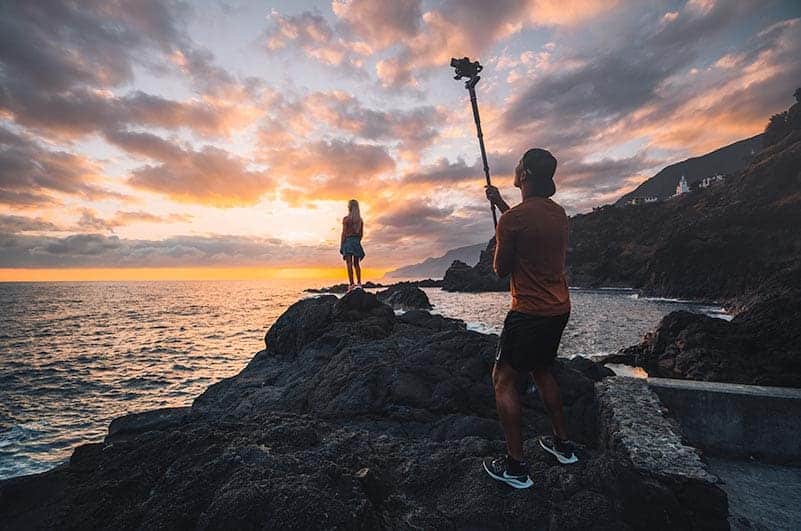
3. How much weight do I like to carry with me?
As mentioned before, the weight of a camera is an important specification for me to look for. When this is also the case for you, important specs to keep in mind are the sensor size and type of camera. For example, a DSLR (Digital Single Lens Reflex) camera is heavier than a mirrorless camera. This is because the mirror construction needs a bigger body to fit in which brings more weight and size. In my opinion, a DSLR will not qualify anymore as the best filmmaking camera, so I will not include one on this list.
In general, mirrorless cameras have the following advantages compared with DSLR’s. They are more compact, lighter, faster, and better for video. A big Pro when using a mirrorless camera is the presence of an electronic viewfinder and LCD monitor that will display a preview of the image. As for sensor size, full frame sensor cameras do not always have a bigger camera body compared to APS-C and Micro four thirds sensor cameras. The weight differences are mainly attributable to the different sizes of the lenses you need for the different sensor sizes. In most cases, Full frame lenses do provide a higher image quality but are also a lot bigger, bulky, and heavier than micro four thirds or APS-C lenses.
Are you new into filmmaking or videography?
Are you new into filmmaking or videography and in search for a complete online filmschool? I surely recommend having a look at Full Time Filmmaker. I’m still going through the courses of this online film school because it offers so many topics, there is something for everyone, So if you are interested to discover more of Full Time Filmmaker follow this link HERE. It would be awesome if you use this link once you decide to purchase the full school or one of the other courses they provide. In this way, without extra costs for you, you can support our blog so we can continue writing more articles like these. They even have a full workshop dedicated to editing in Davinci Resolve where you can download their Custom Keyboard Shortcuts!

FullTime Filmmaker has a lot of courses available, specified per discipline
4. Do I prefer a certain camera brand?
A lot of people are a fan of or swear by a certain brand. And if this is the case for you please follow your heart in this, it’s great to be passionate about a brand or certain camera models. Sony, Panasonic, Canon, Nikon, Fujifilm, Blackmagic are very popular brands and I can tell you already one of these brands will be your best camera for filmmaking! They all have some outstanding cameras in their product range.
5. Do I want to buy a new or used camera?
A good way to spend less money is to buy a second-hand or used camera. A lot of the brands I mentioned launch new models or updates every year. Of course, it’s not necessary to buy a new camera for filmmaking every year, but some people do and because of that, the used camera market is quite big.
It’s really important to do some good research when you want to buy a brand new camera. We like to mention this because you don’t want to spend a large amount of money on a new camera to find out afterward the successor will release in a few weeks. So always try to find the release date of the camera you want to buy. If it was released several years ago try to find the information when a new one is about to come out.
A second-hand or used camera is the perfect way to save some money. And besides that, it’s a great way to find out for yourself if you like filming. We know some people who bought a brand new expensive camera but only used it once for their holiday. And for some reason, they didn’t pursue growing with the camera to get the full potential out of it. If this will be the case for you, it will hurt you less with a used camera because you can sell it again for almost the same price as you bought it.
Now you may have more clarity about what kind of filmmaker you are, let’s dive into the camera specifications we will look for to create the list of the best cameras for filmmaking.
Best cameras for filmmaking specifications you need to look for:
I’ve selected the list of best cameras for filmmaking based on how they score for the following camera specifications:

Camera specifications to look for when selecting the best cameras for filmmaking
I’ll explain how I determined the score per specification:
Sensor Size
A full frame sensor delivers in general a higher image quality compared to the cropped APS-C or Micro Four Thirds sensors. You will get a larger field of view, a broader dynamic range, and better low light performance. Also, it’s easier to create depth of field more nicely. I do want to mention the depth of field depends on more than only the sensor size. The focal length, aperture, and distance to the subject all affect this. In my other BLOG, you can find more information about how aperture and different focal lengths affect the depth of field.
Resolution
These days 4K resolution is the standard. All the best cameras for filmmaking I selected are capable of recording in this resolution or higher. The higher the resolution the sharper the image will look because the more details it can capture. Because of this, you will have more flexibility to crop your image in post-production without losing too much detail of the image.
Frame rates (slow motion)
Slow-motion footage looks stunning and will create a different kind of emotion in the image. Especially some emotional moments or beautiful nature shots are worth capturing in slow-motion. To film slow motion you need a camera able to record high frame rates per second (minimal 50/60 fps). You want to have this option available in filmmaking because at some point you need to use it creatively. The higher the frame rate the camera can record the more slow-motion you can produce. Standard slow-motion is 60 fps which is 2.5 times slower than normal speed. Some cameras like the Panasonic GH6 go up to 240 fps which is almost 10 times slower than normal speed!
Autofocus performance
Autofocus is not necessary with filmmaking but great performing autofocus can make your life way easier. It will support you in capturing the highest image quality and when tracking a subject it might perform better than manual focus unless you have a separate person available as a focus puller. Canon and Sony cameras are proven brands with high-performing autofocus.
Bit Depth
To keep this simple; the greater the bit depth the more color depth the camera can capture. Basically, the bit depth relates to how many different brightness levels are available in each of the three color channels red, green, and blue. Most cameras you will see in this list can capture 8 bit and 10 bit. My experience with the Sony A7Siii, which can record 10 bit color depth, is a brighter and higher quality image compared to 8 bit. And when color-grading the 10 bit footage in post, I noticed I have way more latitude. Eventually, you will need this for filmmaking when you plan to color-grade your footage a lot. It is not mandatory of course but the results are worth it.
In body image stabilization
These days there are various ways to capture smooth and stable footage. Shooting on a gimbal, glide cam or Steadicam can be very useful to get smooth footage. And even when you failed to capture smooth footage, you can fix this in post with the help of professional editing software like Adobe Premiere Pro or Final cut. However, when shooting handheld it’s a real challenge to get very smooth footage unless you are a human gimbal. For example, as a documentary filmmaker, you won’t always have the time to set up your gimbal as most of the time scenes are not directed. This is where the camera in body image stabilization, also called IBIS, will help you. This is done by stabilizing the camera sensor or by digital stabilization which is kind of the same you can do in post production.
Low Light Performance
The rule of thumb for a great performing filmmaking camera in low light is the bigger the sensor size the better (apart from the lens you use). So you already can conclude Full frame cameras will outperform APS-C and Mirco Four Thirds sensor cameras in low light. Also, ISO plays a role in this and the number of megapixels. The less grainy the image becomes when bumping up your ISO to high values, the more useful the image will be. One manufacturer does this better than the other, so I looked at this too. Also, it is important to have a wide ISO range.
Dynamic Range
The dynamic range of a camera refers to the range in which a camera can successfully capture the lightest and darkest areas of an image without losing detail. When this range is exceeded, the highlights will wash out to white and the darks to black. Blown out highlights contain no information anymore so you can’t correct this with the video editing in post-production. The wider the dynamic range the more visible the shadows and highlights will be captured in one image.
SCORE PER CAMERA MODEL
Now we better understand where to look for to list the best cameras for filmmaking, let’s have a look at which camera model scores best! The table below will provide you with the specifications discussed above. Also, you will find out how they score for Autofocus & Low Light Performance.

Top 10 best cameras for filmmaking
Best camera for filmmaking
#1. Sony A7S Mark lll
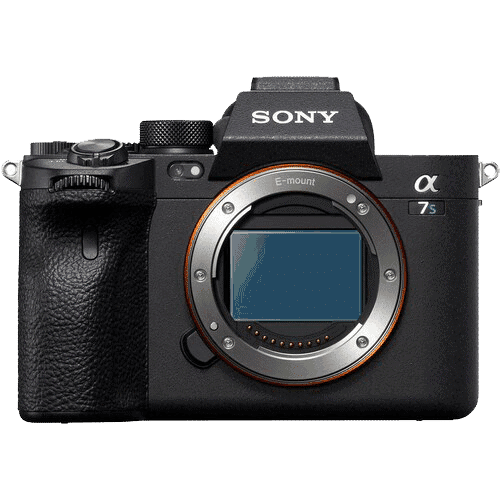
The Sony A7s Mark lll is very popular with a lot of Filmmakers. It’s a compact, light Full frame body with great autofocus and all this for the price of $3500. It’s definitely a camera to consider although it’s not the cheapest 4K camera for filmmaking. When you are a hybrid shooter it’s not the best combo but it surprisingly performs great in shooting stills, despite the 12 MP sensor. It’s designed to perform as the best camera for filming. But if you love to shoot photos for your blog or social media this beast won’t disappoint you. But why is this camera so popular with filmmakers? Let’s dive into the specifications to find out why the Sony A7S Mark lll ranks #1 on the list of best cameras for filmmaking!
DIMENSION AND WEIGHT
From the first time I had this camera in my hands, the camera body gave me a comfortable feeling. It’s very compact for a Full Frame camera and the grip improved a lot compared to his predecessor and the A7R bodies. The grip offers so much more space for your hand, especially if you have bigger hands than the average size. The weight distribution depends of course on which lens you have fitted, but overall the Sony A7SIII is very well balanced. Travel filmmakers will love this camera because of its compact size (128.9 x 96.9 x 80.8 mm) and low weight (699g) inclusive batteries.
RECORDING MODES | RESOLUTION | SENSOR SIZE
It took Sony five years to upgrade A7S II to the Sony A7S III. If you love to shoot videos in 4K this might be the best filmmaking camera for you. The Sony A7S III is designed to shoot 4K with a full-frame sensor. The sensor of only 12 Megapixels maybe sounds a bit disappointed but it isn’t. The larger but fewer pixels on the sensor will give you great benefits at high ISO and it reads much faster which will reduce the rolling shutter that many mirrorless cameras can have.
A powerful new processor means an enormous range of 10-bit 4:2:2 codecs which can be used at speeds up to 120 fps in 4K! And you can go to 240fps in HD, still in 10-bit, how awesome is that?
DYNAMIC RANGE | LOW LIGHT PERFORMANCE
The Sony A7S lll is the best performing camera in low light compared to the other models in this list. The ISO range goes from 80-102,400, expandable as low as 40 and high as 409,600. In dark conditions, you’ll be able to see more through the camera than with your own eyes! The Sony A7SIII has an incredible dynamic range up to a maximum of 15 stops. This amount of stops can be reached according to the settings you choose. With Sony S-Log2 and S-Log3 as well as HLG settings, you can maximize the shadow and highlight detail.
Watch our Madeira Travel Film shot with the Sony A7S III
AUTOFOCUS
The Sony A7S III has a high-level autofocus system with 759 phase-detect AF points with Real-time Eye AF (human & animal). This results in reliable, super quick autofocus and subject tracking performance. Like other Alpha-series Sony cameras, the A7S III features a hybrid AF system, and in addition to its massive array of PDAF points, the camera also has 425 contrast-detect AF points. Autofocus coverage spans a more than impressive 92% of the image area both horizontally and vertically. Did I already mention how great the autofocus of this camera is?
IMAGE STABILIZATION
Lastly, like the predecessor, the A7S III features an in-body image stabilization system, and as you would expect, it’s rated for better performance than the previous model. The A7S III’s SteadyShot INSIDE system offers a claimed 5.5 stops of stabilization correction, up from the 4.5-stops offered in the A7S II. Like the previous model, the combination of powerful IBIS and excellent High ISO performance should make the A7S III a powerful camera for gimbal usage.
The powerful IBIS is a critical feature for smooth handheld video. When using it on a gimbal it will smooth out all jitters. Beyond just the standard in-body IS system, the A7S III now offers Active Mode Image Stabilization. This is a stabilization technology first seen in Sony’s RX-series camera and now making its debut in a full-frame Sony camera. This progressive feature works on top of the normal IBIS system, with the camera tracking movement and motion through frame analysis to further enhance the range of stabilization compensation.
When using Active Mode Image Stabilization with video, there is a very slight crop in on the image, though Sony did not specify a crop factor but maintains that you don’t lose full 4K resolution or quality. The result is that Active Mode Image Stabilization should allow for improved stabilization performance when performing larger movements such as when walking or running handheld with the SonyA7S III.
CONCLUSION
The high performing autofocus, great low light performance, and the wide range of 4K/ 10-bit recording possibilities make the SonyA7S III the best camera for filmmaking. It produces a high-quality professional image with an incredible dynamic range and beautiful colors. The affordable price of $3500 for a Full Frame camera body with these capabilities is certainly worth it. In practice, this camera performance is more reliable than for example the Canon R5.
Best camera for short films
#2. Blackmagic Design Pocket Cinema Camera 6K G2

This Pocket Cinema Camera 6K G2 is the latest compact Super35 camera released by Blackmagic Design series. This cine-style camera definitely ranks as the best camera for short films on this list. It features the same 6K S35 sensor, recording features, dynamic range, and controls as the 6K Pro but changed a few features to create a more affordable form, such as the internal ND filters. Looking at the price and high specifications of this camera makes it hard to believe how much you get for $2499. The 6K resolution upon to 50 fps, 13 stops dynamic range and a super clean image must sound good right? If you are in the market for something special and unique, this camera might be your best camera for filmmaking.
SENSOR SIZE & IMAGE QUALITY
Thanks to the Super 35 image sensor, 12 bit, and Dual Native ISO up to 25600 you will get super high-quality images, as well in daylight as low light circumstances. This camera is praised for its awesome colors and flexibility in color grading.
PRICE & LENSES
The price is very reasonable for all this which is good because you need to reserve a big part of your budget for the lenses. Coming with a Canon EF lens mount it’s compatible with a wide range of Canon EF lenses. Canon lenses are some of the best glass you can get but are also quite expensive. Luckily there are some great third party lenses available Sigma which provides lenses for the Canon EF mount.
Another great thing is the Blackmagic Design 6K G2 camera comes with a DaVinci Resolve Studio activation key when purchasing this great camera for filmmaking.
The soft rich color toned image out of this camera is so pleasant for the filmmaker’s eye. It ables you to record a wide range of frame rates up to 6K resolution. If you don’t have the budget and currently own a mirrorless camera, this is a great option to come close to a high end professional cinema camera.
CONCLUSION
When you as a filmmaker are into color grading and love to experiment with different moods in your films, this might be the camera for you. It stands out in producing realistic and vibrant colors which will give you a great variety in post-production. The 6K resolution not only provides a crystal clear image but also the possibility to use stabilizing software in post. This you will need because of the missing IBIS. Stabilizing 6K footage in post production will crop the image which doesn’t be a downside when exporting your footage in 4K, you’ll have plenty of crop margin!
Also, the huge display screen can be a plus because it’s that big you won’t need an external monitor. On the other hand, you won’t have an electronic viewfinder. This makes it quite hard to see what you’re shooting in bright daylight.
Check out HERE all the specifications of the Blackmagic Design Pocket Cinema Camera 6K G2. This might be your best camera for filmmaking
Best hybrid camera for filmmaking
#3.Sony A7 Mark lV

Where the Sony A7Siii tops this list as the best camera for filmmaking, the Sony A7IV is very close. To be very honest, image-wise the A7IV is almost equal to the A7Siii. Where the A7Siii is more focused on video and outperforms in recording options, the A7IV offers the best combo for the hybrid shooter. The A7 IV brings a lot of new features and improvements compared to its predecessor the A7III. A higher-resolution 33-megapixel sensor, improved video specs, and updated AI-powered autofocus are a few to name.
The excellent image quality of the Sony cameras comes together with their great autofocus performance. An increase in megapixels compared to the A7III results in a sharper and clear image. Despite the smaller pixels the A7IV doesn’t underperform compared with the low light beast the Sony A7Siii. Where the dual ISO of the Sony A7SIII offers you the cleanest images in low light, the A7IV has the least noise in other ISO ranges.
The body, grip, menu, and control options are similar to the A7Siii. I recommend this camera over the A7Siii if you are a hybrid shooter and don’t need to shoot 4K120fps or RAW. Price wise the A7IV is far more attractive and saves you $1500 which you can spend on for example some great lenses.
To name a downside of the Sony A7IV it must be the rolling shutter. The cause of this is the slow sensor readout speed. When you shoot silently in electronic mode, you’ll have to keep the camera steady.
The Sony A7IV has so much to offer, check this magnificent camera out HERE and discover the full specifications of this beauty!
Best Canon hybrid camera for filmmaking
#4.Canon EOS R6

This hybrid full-frame mirrorless camera of Canon with a refined 20MP CMOS sensor and able to record 4K60 video is another great camera for filmmaking. After Canon released the quite expensive EOS R5 it didn’t take too long to introduce the Canon EOS R6 to the audience. The attractive price of the R6 compared to the price of the R5 ranks this camera before his big brother. Resolution wise the Canon R6 can’t beat the R6 but to be honest, 8K is still overkilled these days.
Canon understands like no other how to build a great camera for as well shooting stills as video. For me, this is one of the best hybrid cameras on the market. The R6 is one of the best cameras for filmmaking beginners who are already professional photographers.
The Canons EOS R6 offers everything you need. Find HERE all the technical specifications to find out why this is one of the best cameras for filmmaking.
Best 8K camera for filmmaking
#5. Canon EOS R5

Even before Canon released the Canon EOS R5 in 2020 it was already pointed out as one of the best cameras for filmmaking. The 8K resolution, 45 megapixel sensor, IBIS, a wide range of available frame rates, and being the world champion in autofocus sounds like a dream, right? Is this the best Canon camera for filmmaking?
Before we dive into the specifications, I think this is the best camera for filmmakers who don’t want to show up with a big cinema camera but do need its capabilities of it. Unfortunately, according to the many reviews of this camera, it has overheating problems which make it hard to use this camera in practice because it will limit the recording time to a very low duration.
DIMENSION AND WEIGHT
At the moment of writing, you won’t find any other brand offering a mirrorless camera body with these specifications. Capable to record Full Frame 8K 12-bit RAW video you will find only in models like for example the Red Monstro/Helium or Sony UHC-8300. I can tell you the price difference is a lot!
The most impressive thing for me is that Canon can produce a camera compact as the R5 (W*H*D = 136*98 *88mm) and light (650 grams) capable of recording 8K RAW. Canon already warned on their official site that if the camera’s internal temperature becomes too high the maximum recording time will be reduced, and for now, this appears to be the case in practice…Will Canon be able to resolve this?
SENSOR SIZE | DYNAMIC RANGE |LOW LIGHT PERFORMANCE
The 35.9 x 23.9 mm CMOS Full Frame 45MP sensor is a dream for filmmakers and photographers. It is said the perfect hybrid camera for photographers who also want to film. This also applies the other way around.
Thanks to Canon CC-Log and HDR PQ internally the camera max outs its dynamic range of 12 stops. With a native ISO range of 100 to 51200 (expandable to ISO 50 – 102,400), the R5 has outstanding low light capabilities.
RECORDING MODES & RESOLUTION
The possibility to film Full Frame internal 8K 12 bit RAW video up to 30 fps and 4K up to 120 fps is far what most filmmakers need. You need to realize how much data these modes will use. In 8K 12 bit RAW the R5 writes approx. 2600 Mbps so high performing memory cards will require a serious investment if you’re planning to do so.

AUTOFOCUS
Where the Canon R5 shines relative to its competitors is its Dual Pixel CMOS AF with 5940 detection points available. The (self-learning) tracking features will take a lot of headaches away. For example, I work a lot with the Panasonic GH5 which AF is not very reliable and responsive. This is a challenge to take in mind when shooting complex gimbal moves where the distance from the camera to the subject varies a lot. With the high performing autofocus, these kinds of shots become much easier so you can focus a lot more on your framing and movement instead to worry about the AF all the time.
IMAGE STABILIZATION
The Canon R5 has an in body image stabilizer. Canon mentioned 8 stops of image stabilization with the right lenses. The performance of this system is pretty mind-blowing. When maxing it out with the right Canon RF lenses you can do handheld shots which will look as stable as if they’ve been shot on a gimbal.
Here is some information about which Canon lenses will give the Canon EOS R5 up to 8 stops of image stabilization.
- 24-70mm F2.8 Canon RF IS USM
- 24-105mm F4 Canon RF L IS USM
- 85mm F1.2 Canon RF L USM
- 28-70mm F2 Canon RF L USM
- 24-105mm F4 Canon RF -7.1 IS STM
CONCLUSION
Apart from all specifications, the Canon R5 has to offer, we need to wait if this camera can stay #2 on this list of best cameras for filmmaking. More and more filmmakers will gain experience with this model so more feedback will be available in the coming months. But if you need a new filmmaking camera and you have the budget the R5 might be worth it to consider. You will be settled for the future and if Canon can resolve the overheating issues, you will have the perfect workhorse for filmmaking. Whether you shoot commercial films or travel films, this camera will impress you and your audience with its superb performance and colors!
Best Panasonic camera for filmmaking
#6. Panasonic Lumix S1H

After releasing their first mirrorless Full Frame cameras, the Lumix S1 and S1R, Panasonic introduced the Lumix S1H as the flagship model for filmmakers. Where the S1R is more designed in favor of photographers the S1H is a filmmaking beast. The Panasonic Lumix S1 is also designed with a focus on video and has some impressive specifications, so why should you better spend approx. $1500 more for the S1H? Based on the differences between the S1H and S1 I will explain why the S1H is the better camera for filmmaking.
First, have a look at what both models have in common:
- 35 mm full frame sensor with 24.2 MP
- 5 axes In Body Image Stabilisation
- 4K 10 bit up to 30 fps
- 4K 8 bit up to 60 fps (You need to record in APS-C mode (cropped sensor) for this)
- The same 225 area Autofocus system, contrast-based (DFD technology)
- Electronic Viewfinder
- Batteries
DIMENSION AND WEIGHT
Roughly speaking, between the S1H and S1 there are no more similarities. Their appearance looks the same but actually, the S1H is heavier (143 g/0,33 lb) and bigger (approx 4 mm in every dimension) than the S1. Panasonic has increased the size of the camera to add a fan that is designed to dissipate the heat. This allows the camera to record for an unlimited time, no matter the recording mode. In comparison with the S1 which has the only unlimited recording in 4K/30 fps. This is a big advantage as for filmmaking you don’t want to be limited in recording time.
LCD SCREEN
Another big plus of the S1H compared to the S1 is the LCD screen. Where the S1 has only a tilting screen mechanism, the screen of the S1H is fully rotatable and you can flip it. The screen also looks more strong and because you can move it to every angle it’s far more readable at difficult low or high angles.

RECORDING MODES & RESOLUTION
The S1H is capable of recording in 6K whereas the S1 can only record 4K. As described earlier, you have many advantages in terms of being able to record in a higher resolution. Additionally, the S1H can record anamorphic where the S1 can’t. This may be a consideration for the future when you want to be able to record anamorphic and use anamorphic lenses for your films.
SENSOR SIZE | DYNAMIC RANGE |LOW LIGHT PERFORMANCE
The sensor of the S1H has been further developed and now has a low pass filter which reduces moire artifacts. Also, the S1H has Dual Native ISO which improves the dynamic range to 14 stops. Also because of Dual Native ISO, the level of Noise is reduced which will result in a cleaner image. Because of the full frame sensor, Dual Native ISO the low light performance is very impressive and produces clean images with ISO values up to 4000!
Because of the V-log, you will get a dynamic range of 14 stops to capture everything from highlights to shadows. Together with the 10 bit internal recording, you will be astonished by the high quality and clean image you can capture in different light conditions.
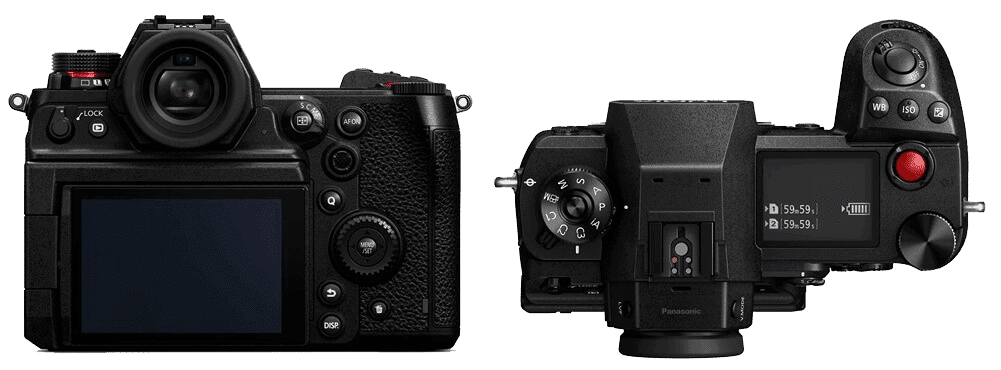
FRAME RATES & SLOWMOTION
With the Panasonic Lumix S1H, you can capture various frame rates. High Frame Rate (HFR) shooting is possible up to 180 fps (only in HD Resolution) and in 4K up to 60 fps, even in 10 bit with audio and autofocus still available!
CONCLUSION
The Panasonic Lumix S1H is a filmmaker’s dream on many fronts. Of course, I have to name some disadvantages, which are the price, dimensions, weight, and autofocus. On the other hand, you get value for your money. Namely a camera that is fully optimized for filmmaking, impressive video capabilities, high-end specs, and performance with an impressive range of recording formats. This camera has been a proven tool in producing high-end professional films and because of that, it’s the #2 in my list of the best cameras for filmmaking!
Best micro 4/3 camera for filmmaking
#7. Panasonic Lumix GH6

This latest GH model of Panasonic offers maybe one of the most impressive frame rate options. Starting with 5.7K at 60 frames per second it can do frame rates up to 240 fps in 4K and up to even 300 fps in full HD!
For years the Panasonic GH5 was the best beginner filmmaking camera. The GH5 is used by a wide range of users. From Indie filmmakers to YouTubers. It’s even one of the best cameras for film students. The affordable price together with the high end video specifications and incredible IBIS made the GH5 a total package for a lot of people.
Like his predecessors theGH5s/GH5 the Panasonic LUMIX GH6 is a Micro Four Thirds camera. With its 25.2 megapixels Live MOS Micro Four Thirds image sensor it can shoot at a resolution of 5728 x 3024. This at 29.97p at an amazing 1900 megabits per second. Another great feature of the GH6 is it is using the ProRes 422 HQ codec. It can record 4:2:2 10-bit footage which will give you a lot of options and flexibility in color grading.

The biggest downside of the GH5 is the low light performance and dynamic range performance. With the GH6 Panasonic improved this with a new dynamic range boost mode. This mode will give you 1-2 extra stops of dynamic range when filming in V-log. Because of the small sensor, the performance is still not great when shooting in higher ISO ranges. The noise starts after ISO 1600 and will be even worse up to ISO 6400.
Unfortunately, the autofocus system is still contrast-only. With this AF system, it still struggles in situations where you don’t have strong contrast. You will experience this when the subject you try the capture is hard to separate from his background.
CONCLUSION
The Panasonic GH6 is the camera to choose from over the GH5 if you want to have the latest improvements of this series. But if you are just starting the GH5s or GH5 is still worth it and offers more features you can wish for as a filmmaking camera for beginners.
Check out the wide range of specifications of the Panasonic GH6 out HERE!
Best Photo camera for filmmaking
#8. Nikon Z7 II

The new Z7 II, being the high-resolution model in Nikon’s mirrorless lineup, is all about excellent image quality. Know for its outstanding still imagery performance, the Z7 II is also a more-than-capable video camera. UHD 4K video recording is possible up to 60p and Full HD 1080p video recording is also supported at up to 120p for slow-motion playback.
More advanced and improved video features have been added with the Z7 II, including the N-Log gamma for capturing flat-looking footage that maximizes dynamic range and HLG (HDR) for recording HDR-ready footage. The improved eye-detection performance autofocus together with the 45.7MP BSI CMOS sensor makes this Nikon an all-around low light beast. The low-light quality is very impressive for this high resolution camera. Fast readout speeds benefit continuous shooting, movies, and time-lapse recording.
If you are more focused on landscape photography but also want to shoot video this might be your best camera for filmmaking. Check HERE the full specifications of this Nikon flagship.

Best beginner camera for filmmaking
#9. Panasonic Lumix GH5S

Who doesn’t know the GH series of Panasonic Lumix? These immense popular video cameras are not only often used by Vloggers but also by filmmakers. There are so many good reasons to choose this camera as your workhorse for filmmaking, especially when Panasonic released the GH5s. With this little beast, you have so many possibilities. With the high-end specifications, it offers a lot you need to produce professional-looking films.
I bought the Panasonic GH5 in 2017 shortly after its release date and I’m still using it in 2020 to produce my travel films. I still love this camera, you get so much for such a great price! After using it now for 3 years the strength and weaknesses are very clear to me.

Where Panasonic designed the GH5 as a hybrid camera capable to shoot high-quality video and stills, the GH5s is further developed for filmmaking and video. For a long time, the GH5 was the only 4K camera capable of recording 60 fps in this resolution. It still is considered the best camera for 4K video in his price range.
The Panasonic GH5 and GH5s almost look identical. Apart from the red recording button, red S and red ring around the drive dial of the GH5S the bodies are the same. We have to look inside to discover the real differences.
SENSOR SIZE | MEGAPIXELS |RESOLUTION | BIT DEPTH
Both the GH5s and GH5 have a Micro Four third sensor. However, the GH5 sensor has a 20MP resolution whereas the sensor from the GH5s has half the megapixel, namely 10.2. Why did they lower this amount for the GH5s? Well, because of the fewer pixels and the same sensor size the size of the pixel is larger so that it can receive more light. Because the more light it can receive this reduces the noise at higher ISO levels.
The Panasonic GH5s and GH5 can both record in 4K Ultra HD (3840×2160) or Cinema 4K (4096×2160) formats. The difference is in the Cinema 4K where the GH5 is limited to 24fps while the GH5s can record up to 60fps. In 4K UHD, both cameras can record top to 60fps. For a long time, the Panasonic GH5 deserved the title of the best 4K video camera in its price class.
Internally (!) bot models can record at 4:2:2 10-bit and 400mpbs in 4K which is impressive as other brands mostly don’t offer this internally. You will need an external recording monitor for this
DIMENSION AND WEIGHT
A big plus of the Panasonic GH5 is its weight and dimension. Because of the Micro Four Third sensor the body is very compact and light. Also, the Micro 4/3 lenses are light and compact. This makes the camera perfect for travel filmmakers and gimbal use!

FRAME RATES & SLOWMOTION
I still can remember how many people were impressed by the number of frame rates when the GH5 was released. With 180 fps (HD resolution) you can create 7.5x slow motion. And if that is not enough, they even increased this to 240 fps for the GH5s which is 10x slow motion!
IMAGE STABILIZATION
The Panasonic GH5 has one of the best, or even the best, IBIS you can find in the mirrorless camera segment. Especially in combination with the Panasonic lenses which have O.I.S. (optical image stabilization). I’m still amazed by how smooth handheld shots you can produce with this.
For many people it was kind of a big surprise Panasonic left IBIS out of the GH5s, but not without a reason. It seems that the IBIS system creates more internal heat, which in turn creates more noise. Also, most filmmakers use a gimbal, tripod, or glidecam to stabilize their footage. My experience with the GH5 is the IBIS does smooth some bumps out where my gimbal won’t smooth everything out completely. Also, a lot of lenses have O.I.S. which can be enough to get smooth footage. This confirms once again that Panasonic has optimized the GH5 for high-end filmmaking!
DYNAMIC RANGE & LOW LIGHT PERFORMANCE
We have arrived at the area where the GH5 does not score very well because of the small micro four thirds sensor. Panasonic improved this with the GH5s with the 10.2MP sensor and Dual Native ISO. As mentioned earlier this lower amount of pixels receive more light which reduces the noise at higher ISO levels. And because of the Dual Native ISO (ISO 400 & 2500), the noise level is very low when shooting at ISO 2500 in low light conditions. You even have usable footage up to ISO 12800!
Both the GH5 and the GH5s have V-log available. Where this is standard included with the GH5s you need to purchase this extra for the GH5 for $100. Vlog is a flat color profile providing a wide dynamic range of 14 stops for the GH5s and 12 stops for the GH5 at a Native ISO 0f 400. My experience with the GH5 and Vlog is you want to choose this color profile mainly when shooting in 10bit. In 8bit you might get some artifacts because of the small sensor size.
COMPARISON OVERVIEW GH5S VS. GH5

CONCLUSION
Budget wise, dimension and weight, and recording possibilities together with the high-quality image make this camera a dream for the Travel filmmaker. The Panasonic GH5(s) is still a camera you want to buy in 2020. Especially when you are just starting with filmmaking!
Best FUIJIFILM camera for filmmaking
#10. FUJIFILM X-H2S

The original FUJIFILM X-H1 represented a big step forward for filmmaking in the X-series, not least because of the inclusion of in-body image stabilization. These improvements continued with the X-T4 offering stabilization and 10-bit 4K capture at up to 60 fps. The X-H2S made another big improvement by adding internal ProRes capture options and letting you shoot 10-bit 4:2:2 or 4:2:0 in your choice of All-I or LongGOP, for all its resolutions and frame rates.
Also, there’s the addition of a new, F-Log 2 gamma curve. Fujifilm claims the X-H2S produces its 6.2K and 4K up to 30p from 14-bit readout, rather than 12-bit mode on previous cameras, meaning the camera can detail up to an extra 2 stops of dynamic range in video mode.
Compared to the Full frame and Micro for third cameras in this list, the X-H2S sits as the only real high-end APS-C camera on the market.
A cool addition of the FUJIFILM X-H2S are the film simulation modes which allow you to reproduce the look and feel of several of FUJIFILM’s film types, including Provia, Velvia, Astia, Classic Chrome, Classic Neg., Nostalgic Neg., Pro Neg. Hi, Pro Neg. Standard, Eterna, Eterna Bleach Bypass, Acros, Monochrome, and Sepia.
The 5-axis sensor-shift image stabilization helps to minimize the appearance of camera shake when filming handheld. This system works in conjunction with most X Series lenses. Additionally, digital image stabilization can also be used during video recording for even more steady footage.
With these key features, FUJIFILM’s latest edition offers many capabilities and is another good camera for filming. For sure, compared with the other options in this it isn’t the best camera for filmmaking. That’s why we end this extensive list with this model.
Are you interested to find out more about the FUJIFILM X-H2S? Head over HERE to learn everything about this camera.
FAQ best cameras for filmmaking
1. How can I determine the right camera for my filmmaking needs?
Start by identifying your specific requirements, budget, and shooting style. Research and compare the various cameras based on their features and capabilities before making a decision.
2. Are cinema cameras only for professional filmmakers?
Cinema cameras are used by both professionals and aspiring filmmakers. Many options cater to different skill levels and budgets.
3. Can I use a mirrorless camera for photography as well?
Absolutely! Mirrorless hybrid cameras excel in both videography and photography, making them versatile tools for creators.
4. Do I need expensive lenses for filmmaking?
While high-quality lenses can enhance your filmmaking, some budget-friendly options can still yield impressive results. It’s essential to strike a balance based on your requirements.
5. How can I improve my filmmaking skills?
Practice regularly, study from reputable resources, experiment with different techniques, and seek feedback from peers or mentors to continuously improve your filmmaking skills. But in the end the best way to improve your skills quickly is practicing in the field every
More articles about filmmaking & gear
Do you need a new drone? Find out HERE which one is the best for filmmaking.
Find out HERE what the best shutter speed is for cinematic videos!
More Video Edit Tips
BEST VIDEO SHUTTER SPEED for Cinematic Videos
How to add CINEMATIC BLACK BARS
How to edit music to your video in Adobe Premiere Pro
ADJUSTMENT LAYER Premiere Pro l The Complete Guide
TIME REMAPPING PREMIERE PRO l How to make a SPEED RAMP


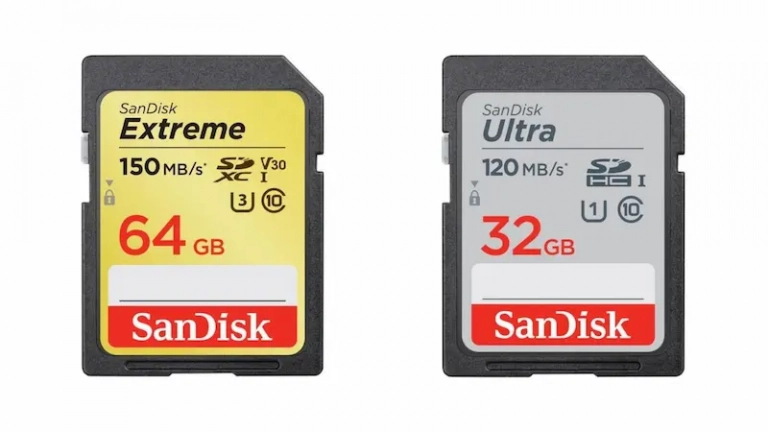
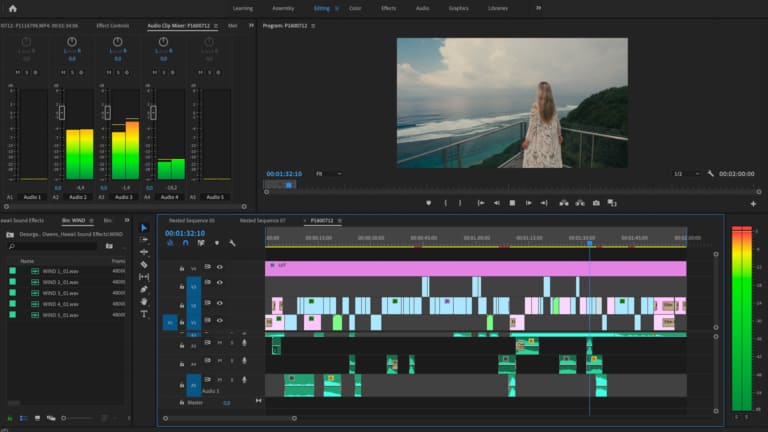
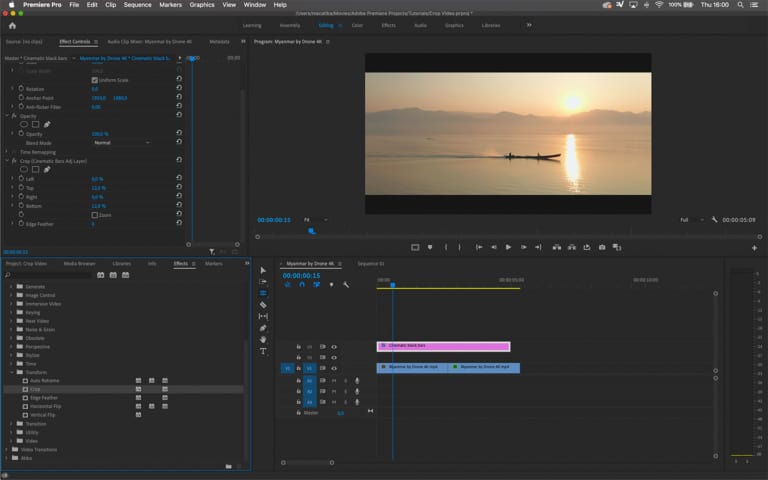
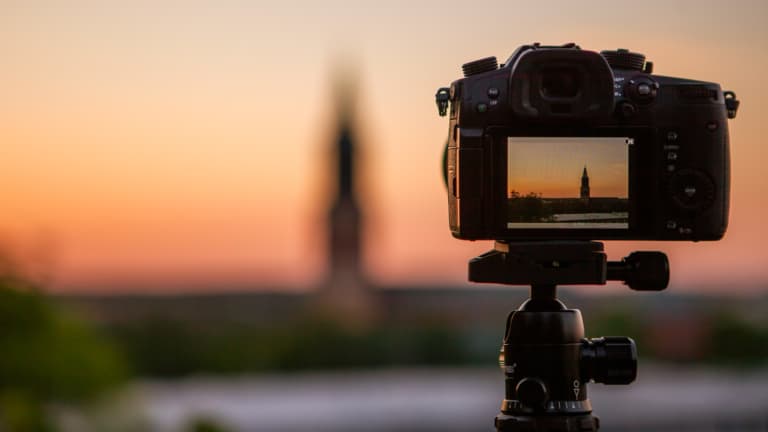
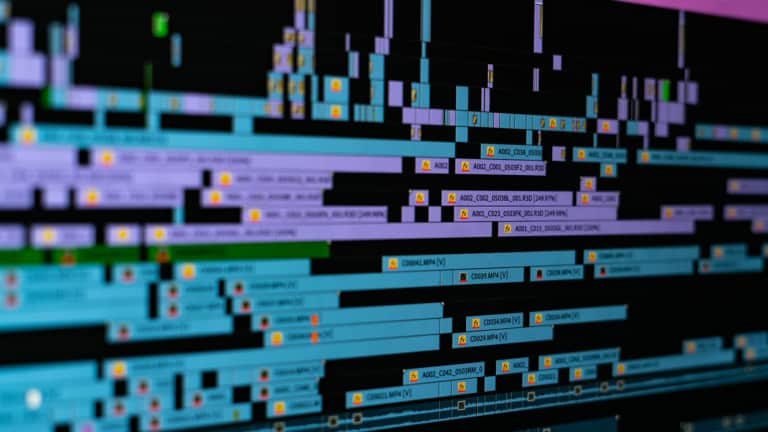

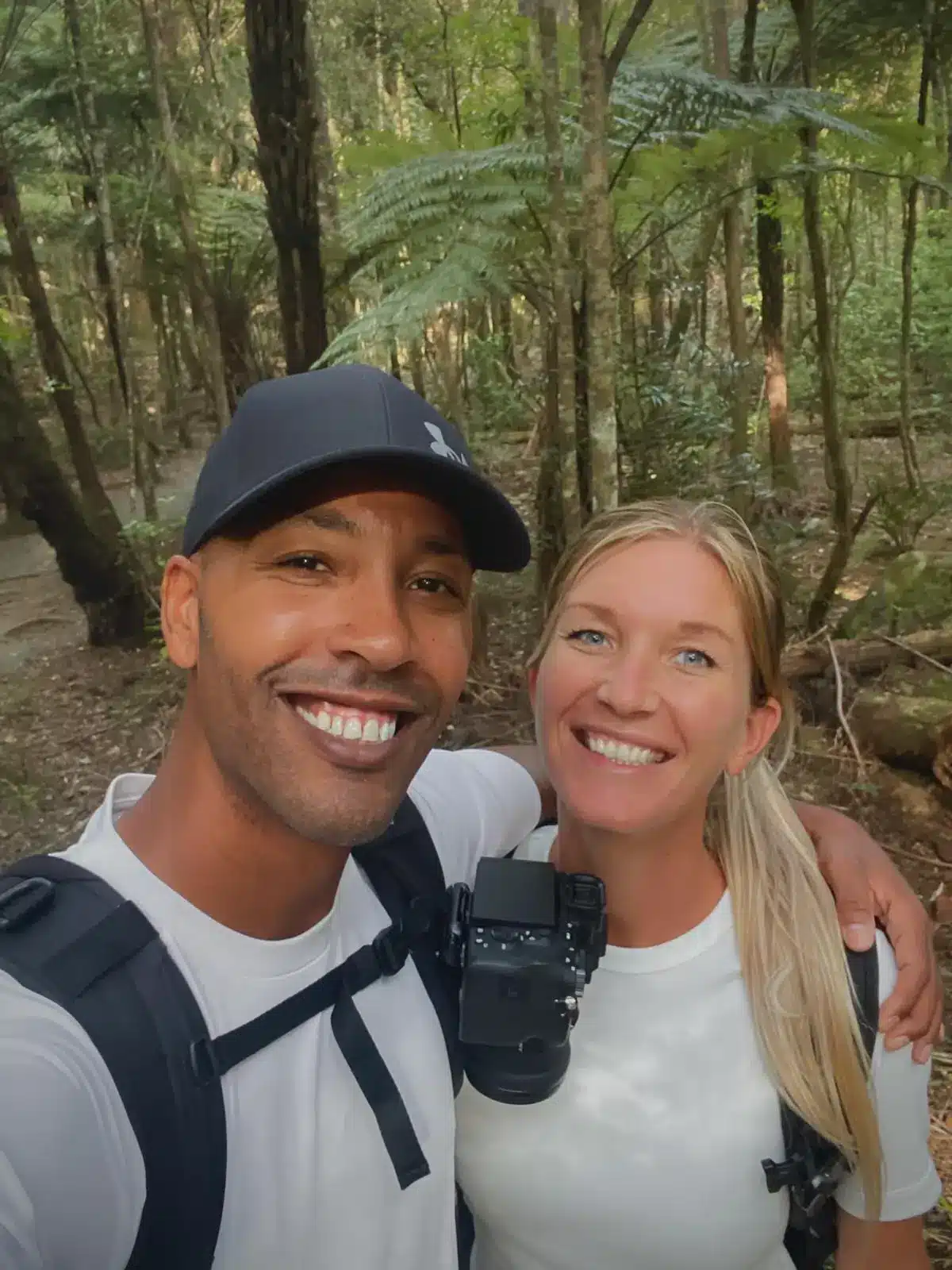
Good explanation
Happy to hear, thanks!
Come to Nigeria. I love your works. I will show you hard to believe scenes & places in Nigeria.
By the way, good work there.
Though at the end you almost confused me. You leave me struggling to choose between blackmagic and Panasonic GH5S
Hey Steve, thanks for your message! Would love to visit Nigeria one day! Which camera did you choose in the end?
Hi Atiba, wow, how much knowledge you have about all these camera’s. Thank you very much for sharing👍. That makes the decision for what to buy much easier. We liked the photo of you holding the camera, top👌.
Thanks so much guys!